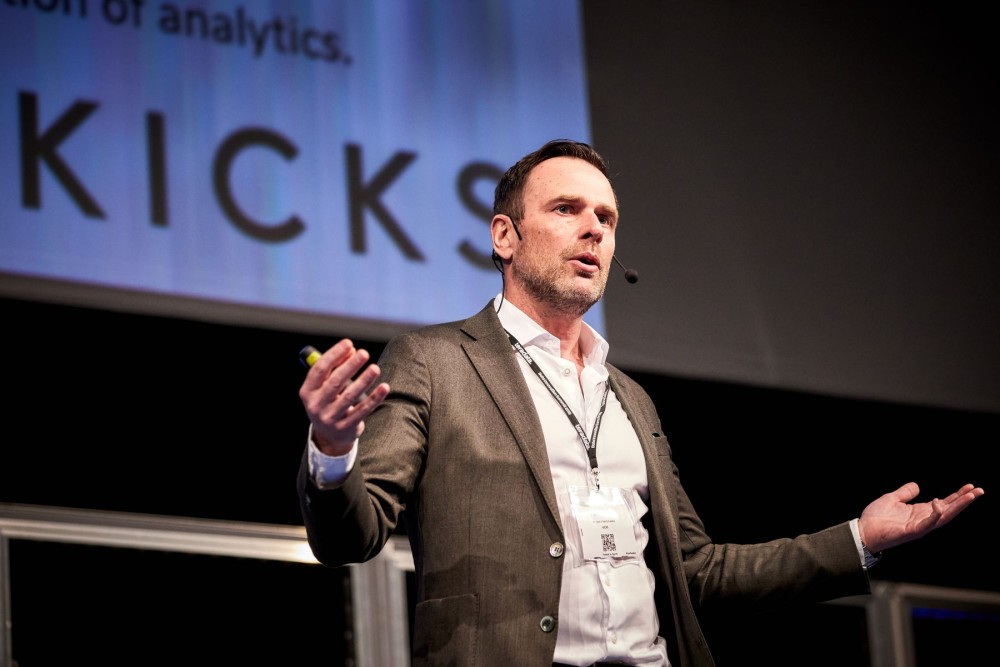Establishing analytics in an organisation may seem like reinventing the wheel and make business leaders feeling like they’re out of their depth.
Luckily, integrating advanced analytics is much more similar cross-industries than one would imagine. Companies that are just beginning this journey don’t have to walk it alone, instead, they can take the advice of someone that has walked the road.
Fredrik Backner, Chief Analytics Officer at Kicks – the Nordic’s leading beauty retailer, guided us through his experience and perspective on the do’s and don’ts of setting up a machine learning analytics practice at the Data Innovation Summit 2019.


Different industries – different use cases? Or not
Before joining Kicks, Fredrik spent 5 years building and leading the global analytics organization for Telia Company. His journey was quite exciting and rewarding with lots of learnings, as he stated in his recent interview for Hyperight.
As someone having extensive hands-on experience with working with analytics in the telco and transferring to the retail industry, Fredrik is best situated to confirm that both industries are quite more similar than you may think. Obviously there are industry-specific use cases, such as network optimization and predictive maintenance for telecom. And conversely, use cases such as assortment and category analytics and logistics is more retail-centric. However within particularly customer analytics there are very much similar use cases in telco and retail, which is one of the core efforts of any successful business.
“What is even more common across all industries are the different capabilities that need to be built up when establishing an analytics organisation,” states Fredrik in his presentation. These capabilities include technology and platforms, data acquisition strategy and operations, maintaining solid data quality, recruiting and retaining data science and analytics talent.
But one of the most overlooked aspects is setting up the data translator role representing the value realisation office that connects the business and technology side of analytics and evaluates the use cases. This step is directly connected to the business adoption which is the no. 1 challenge for succeeding with analytics.
“A successful analytics implementation is roughly 10% about the data, 20% about the algorithms and 70% change management”, emphasises Fredrik.


Data and analytics checklist
When starting out with the data and analytics journey, the first thing to do is assess where your organisation stands in terms of getting value from data and which analytics stack you want to focus on. If you are working with a more traditional organisation with legacy systems and don’t have the competencies in place, you would start from scratch with basic BI and reporting, setting up the basics, and descriptive analytics to deliver insights to the business.
The unicorn companies, digital natives or startups can very quickly leapfrog towards more narrow AI and predictive analytics with machine and deep learning.
As we move from the left to the right on the data analytics scale where basic BI and reporting are on the left, and advanced analytics, machine learning, deep learning are on the right, operationalisation of analytics gets more complicated. This is because BI and reporting are consumed by humans, whereas machine learning and deep learning have other systems on the receiving end which requires changing business processes to see results.


Data and analytics ecosystem
There are many different versions of the data and analytics ecosystem components, but Fredrik offers his which are essential for a successful analytics implementation.
The first and foremost is data acquisition, or how you receive data from the various data sources into a data management system. Once the data acquisition is in place, companies need to make sure they have solid data engineers to take care of the data preparation and engineering so that data scientists and analysts can do their job. The last step is establishing the operationalisation of analytics into the business processes.
The 5 main pitfalls to avoid with analytics
Throughout with experience working with analytics, Fredrik has gained 5 lessons learned or pitfalls that are fundamental to tackle in order to be successful.
1. Go cloud or go home – Unless you have a very valid reason, and that is very rarely the case, you should migrate to the cloud, Fredrik emphasises. Compared to 5 years ago when Fredrik himself was starting out in the field, cloud was barely existent, but today the public cloud providers like Amazon, Azure and Google Cloud are far more mature. Fredrik recounts that previously they used to rely on on-prem Hadoop-based data lake, which is costly and time-consuming and a lot of the time is dedicated to fixing and maintaining the storage unit. With cloud, no operations and maintenance are required, except for the data pipeline and analytics apps that you build on the cloud.


2. Recruit and retain the talent – Once the technology is in place, the next step is securing the talent, Fredrik says. According to him, the most important profile you need in your team is the Data Engineer, followed by the Data Scientist. Data Engineers make sure you have data available in an analysable form and data scientists rely on it to do their job.
The third person you need in the team is the data translator in the value realisation role who balances between the quick wins and the right bets and qualifies the different use cases. This role is unfortunately frequently overlooked, states Fredrik.
DevOps is another crucial profile that makes sure everything that is built is also deployed and works in production. Whereas ML Engineers are common for companies going towards the deep learning spectrum.
3. Select the right technology – With the explosion of vendors on the market, it’s not uncommon to be overwhelmed by all the different tools available. But Fredrik advises not to jump the gun when choosing advanced analytics tools if your organisation is not there yet. Plain BI and data warehousing can take you a long way before deciding on advanced technology.


4. People & tribes – A solid cross-functional cooperation is one of the common oversights for organisations and one that Fredrik himself experienced. Tribes and guilds that include a data scientist, data engineer, data translator and business owner sitting in one team are really effective in producing accountability and ownership in putting products into production and realising value.
5. Quick wins vs. big bets – In analytics, there are promising opportunities that deliver great monetary value and quick wins that keep business happy. The job of the Chief Analytics Officer is to balance between them in order to create a pull from the organisation and ensure funds for the next budget while continuously working on the big bets which are vital for changing the business from the ground up. Apart from choosing the right use cases, it important to choose the stakeholders that are having a data and analytics-driven mindset in order to support the change, people and stakeholder management.














Add comment